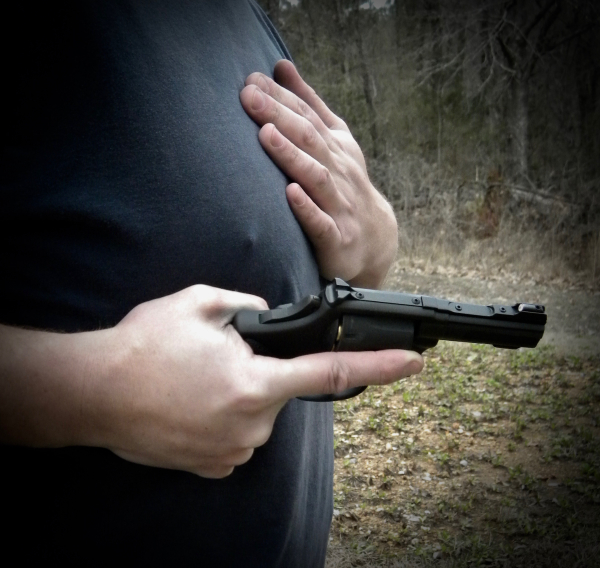The past couple years have seen dramatic increases in physical violence of every type. There’s also been an increase in attackers being stopped by regular people who carry concealed. Some of the shots they have made seem “miraculous,” until you discover that they have all practiced, sometimes very similar scenarios. Which raises the question – can you make the shot?

Defensive use of a firearm often occurs within “short” distances. Sometimes “bad breath,” arms-reach range. Engaging the threat from three or four yards isn’t’ that difficult, as long as the decision to fire is made in a timely fashion. But the threat may already have a physical hold on your body. When was the last time you practiced drawing, then hammering hits into the target from a retention firing position?
Chances are high the threat will be moving. It’s somewhat rare that someone will stand still while you align the sights to press off the shot. Engaging moving targets is easier than most people think. It does take practice to become comfortable with the experience; it’s not something you want to try to learn in the middle of the attack.
It’s possible that the threat is behind cover, and the only part of the body exposed is the head. Effective head shots require placing a surgical shot in the proper location of the skull, as dictated by your angle of view. A six-inch group won’t cut it. You’ve got about a two or three-inch square in which to place the hit. Plus, you’ll likely only get the opportunity to fire one round. Again, people don’t stand still while you shoot.
Hand and arm injuries are common in fights. You may be injured, but it’s still up to you to end the fight. This may be through avoidance and escape. It could be you have to fight with the pistol using your strong or support hand only. Firing with the strong hand isn’t that difficult. Shooting with the support hand is altogether different. These techniques must be practiced in advance, especially surgical shots and at firing at longer distances.
“Longer distances,” you say? There are enough situations where “long-distance” pistol shots were necessary to end the fight. This should provide the reason to practice shooting at longer ranges. This normally requires adjusting your point of aim. At seventy-five yards with most pistols you aim about belt buckle height to get hits in the center of the chest. If the windage – left and right – isn’t properly adjusted you’ll have to compensate there, too. Should your conflict require firing at an increased distance, it’s best to have the sights zeroed, know where to aim, and have the fundamentals of marksmanship squared away.
You never know what it will take to end conflict. Worst-case scenario, you’re forced to fire your pistol. Knowing when to fire is important. Knowing you can make the shot is critical. This confidence and skills are the result of plenty of practice. Recognizing when you shouldn’t press the trigger is equally important, if not more so. If you’re counting on “luck” to make the hit, you shouldn’t be pressing the trigger. Again, practice helps ensure you’re up to the task, no matter what is required.
Tiger McKee is director of Shootrite Firearms Academy. He is the author of The Book of Two Guns, AR-15 Skills and Drills, has a regular column in American Handgunner and makes some cool knives and custom revolvers. www.shootrite.org or visit Shootrite’s Facebook page for other details.
